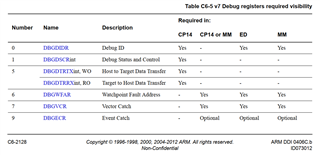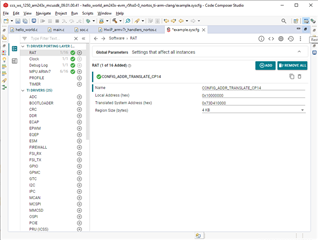I use cp14, which is the instruction of MRC and MCR to operate debug related registers, which will cause an undefined exception. However, the official release manual of armV7r states that cp14 can be used to operate, as shown in the figure, 
So, may I ask how to operate it? If it is method 1, it can be seen that the cp14 interface of V7debug is defined by the manufacturer, so is there a method defined by TI itself? If it is method 2 address mapping, which is also set by TI, please also inform the mapped address area.


 As the picture shows, when writing DBGDSCRext with MCR , it is in system mode. Once the code is executed, it enters an undefined exception as the following picture shows.
As the picture shows, when writing DBGDSCRext with MCR , it is in system mode. Once the code is executed, it enters an undefined exception as the following picture shows.




